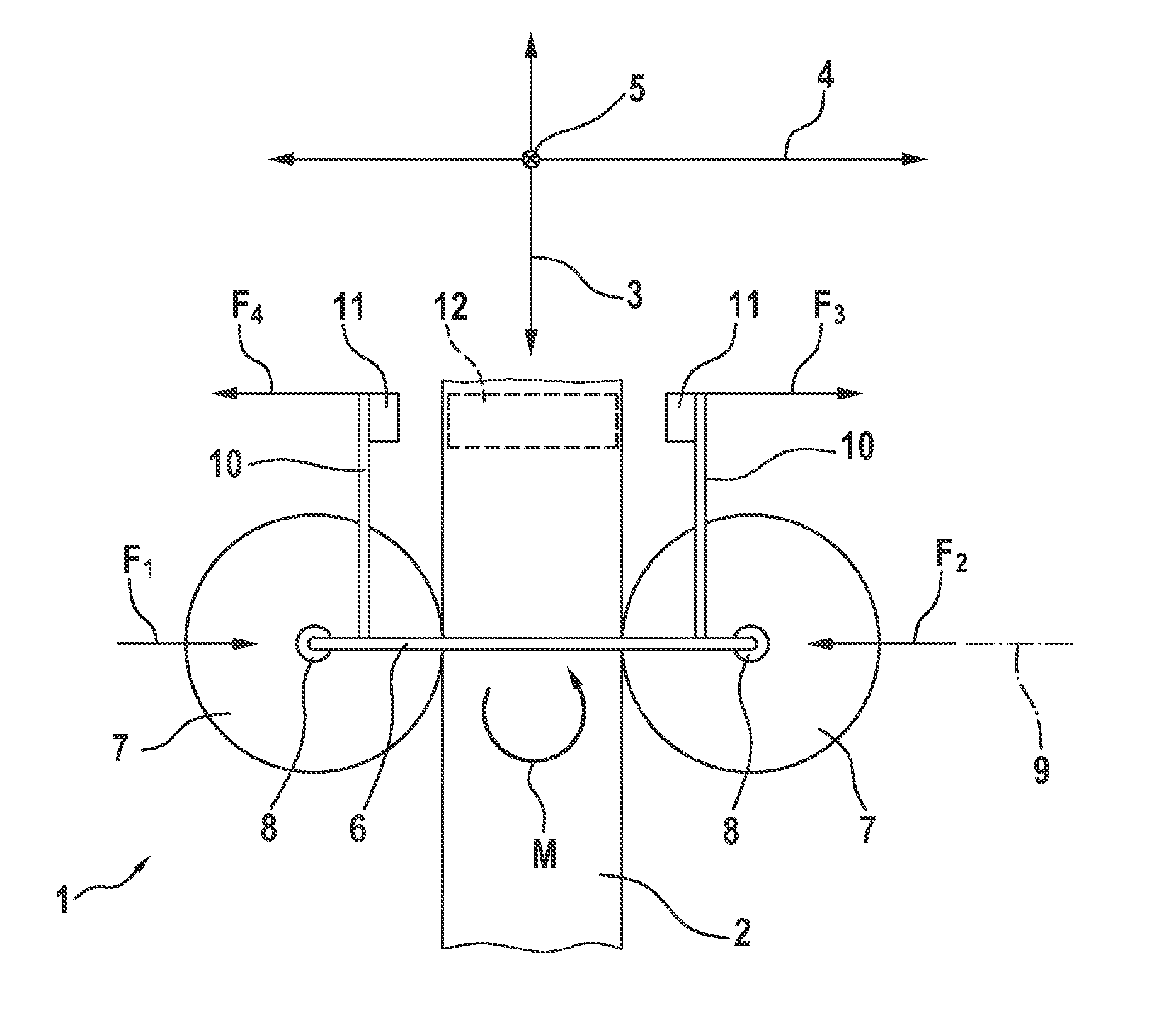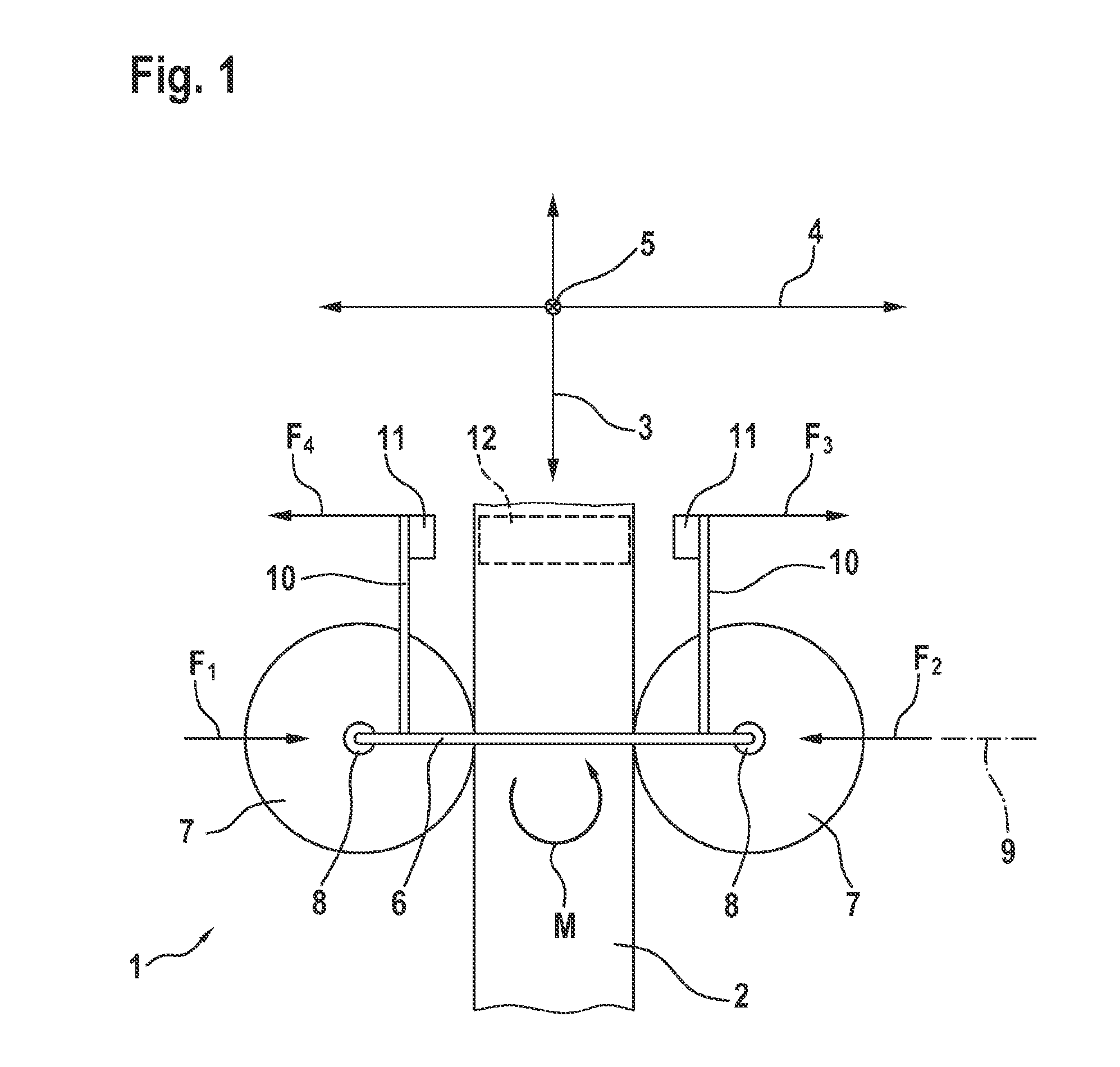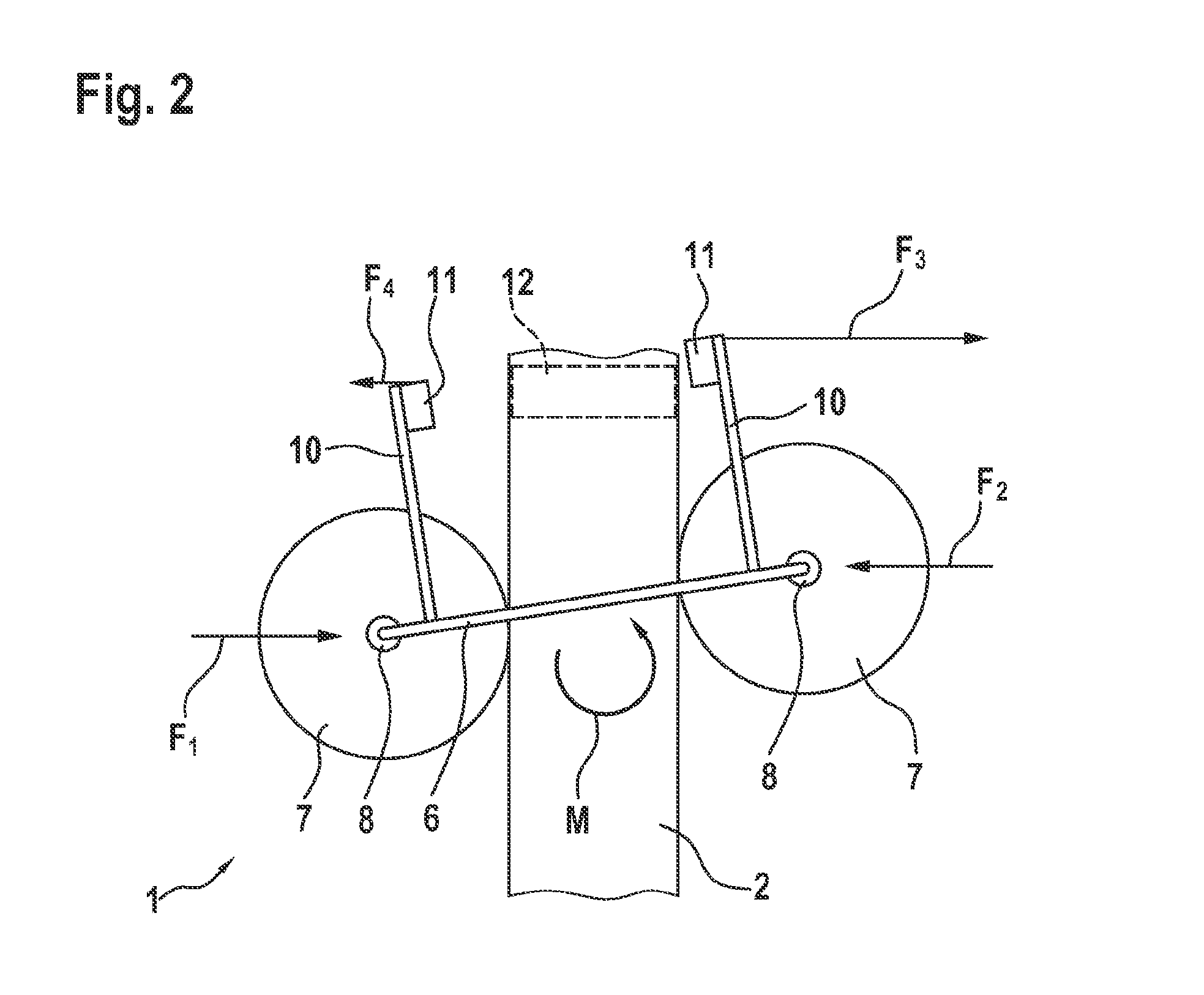Transport device and method for operating the transport device
a technology of transport device and transport device, which is applied in the direction of conveyor parts, mechanical conveyors, non-mechanical conveyors, etc., can solve the problems of premature failure of said rollers, relatively high wear, and situations that can arise, and achieve the effects of facilitating a very compact and light design of the conveyor cart, energy saving, and minimal wear
- Summary
- Abstract
- Description
- Claims
- Application Information
AI Technical Summary
Benefits of technology
Problems solved by technology
Method used
Image
Examples
Embodiment Construction
[0018]FIG. 1 shows the transport device 1 in a schematically simplified depiction. The transport device 1 comprises a stationary running rail 2. A cart 6 is guided on the running rail 2. The running rail 2 extends along a longitudinal axis 3. The cart 6 can be moved linearly in the direction of the longitudinal axis 3. A transverse axis 4 is defined as perpendicular to the longitudinal axis 3. A height axis 5 is defined as perpendicular to the transverse axis 4 and perpendicular to the longitudinal axis 3. The moment of the cart 6 about the height axis 5 is referred to as the yaw moment M.
[0019]The cart 6 has two guiding rollers 7. Each guiding roller 7 is mounted on the cart 6 so as to be rotationally movable about a rotational axis 8. The two rotational axes 8 intersect a straight line 9. The straight line 9 is defined as perpendicular to the longitudinal axis 3 when the cart is centrally aligned. By means of this aligned arrangement of the guiding rollers 7, the two forces F1 and...
PUM
 Login to View More
Login to View More Abstract
Description
Claims
Application Information
 Login to View More
Login to View More - R&D
- Intellectual Property
- Life Sciences
- Materials
- Tech Scout
- Unparalleled Data Quality
- Higher Quality Content
- 60% Fewer Hallucinations
Browse by: Latest US Patents, China's latest patents, Technical Efficacy Thesaurus, Application Domain, Technology Topic, Popular Technical Reports.
© 2025 PatSnap. All rights reserved.Legal|Privacy policy|Modern Slavery Act Transparency Statement|Sitemap|About US| Contact US: help@patsnap.com



